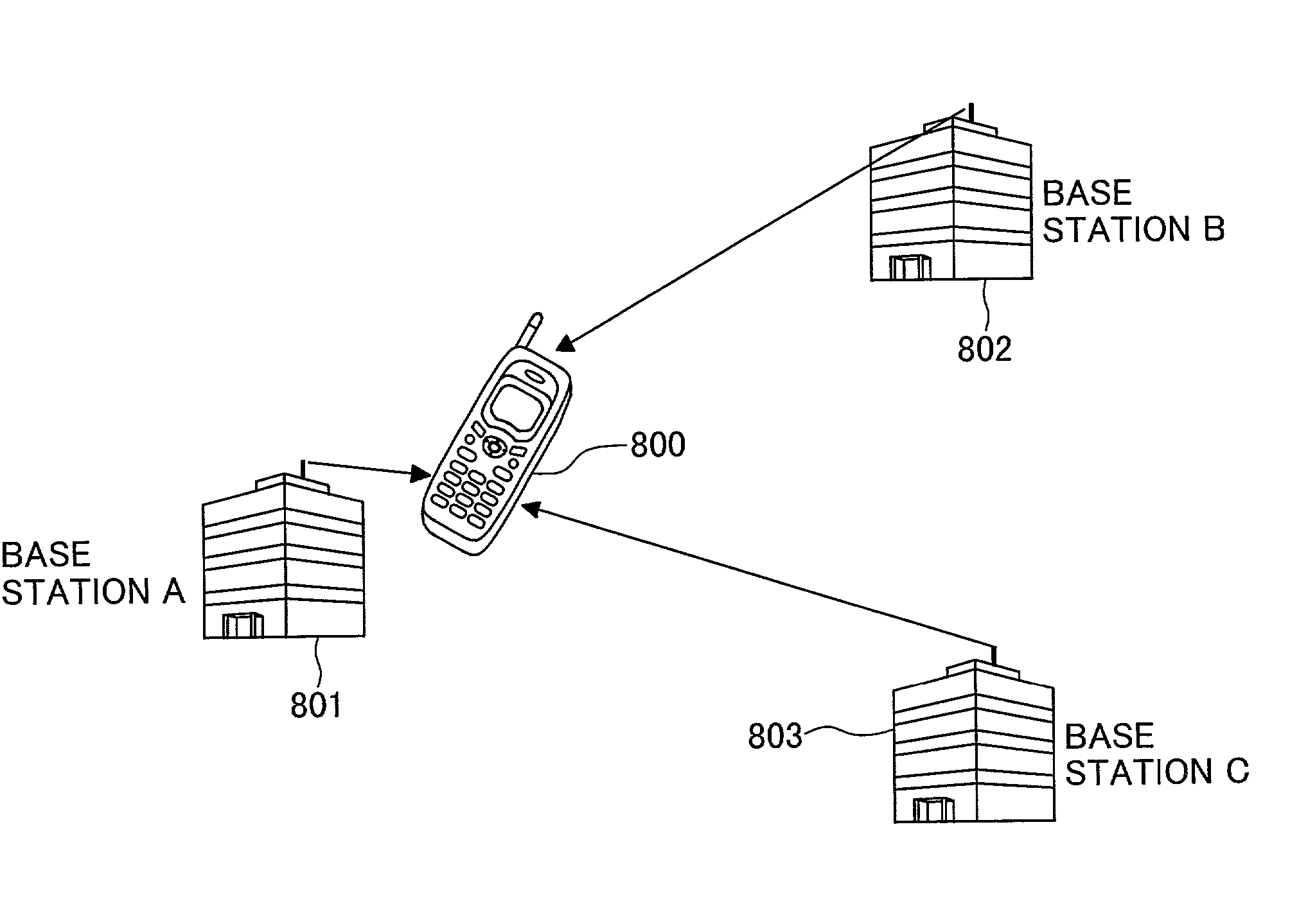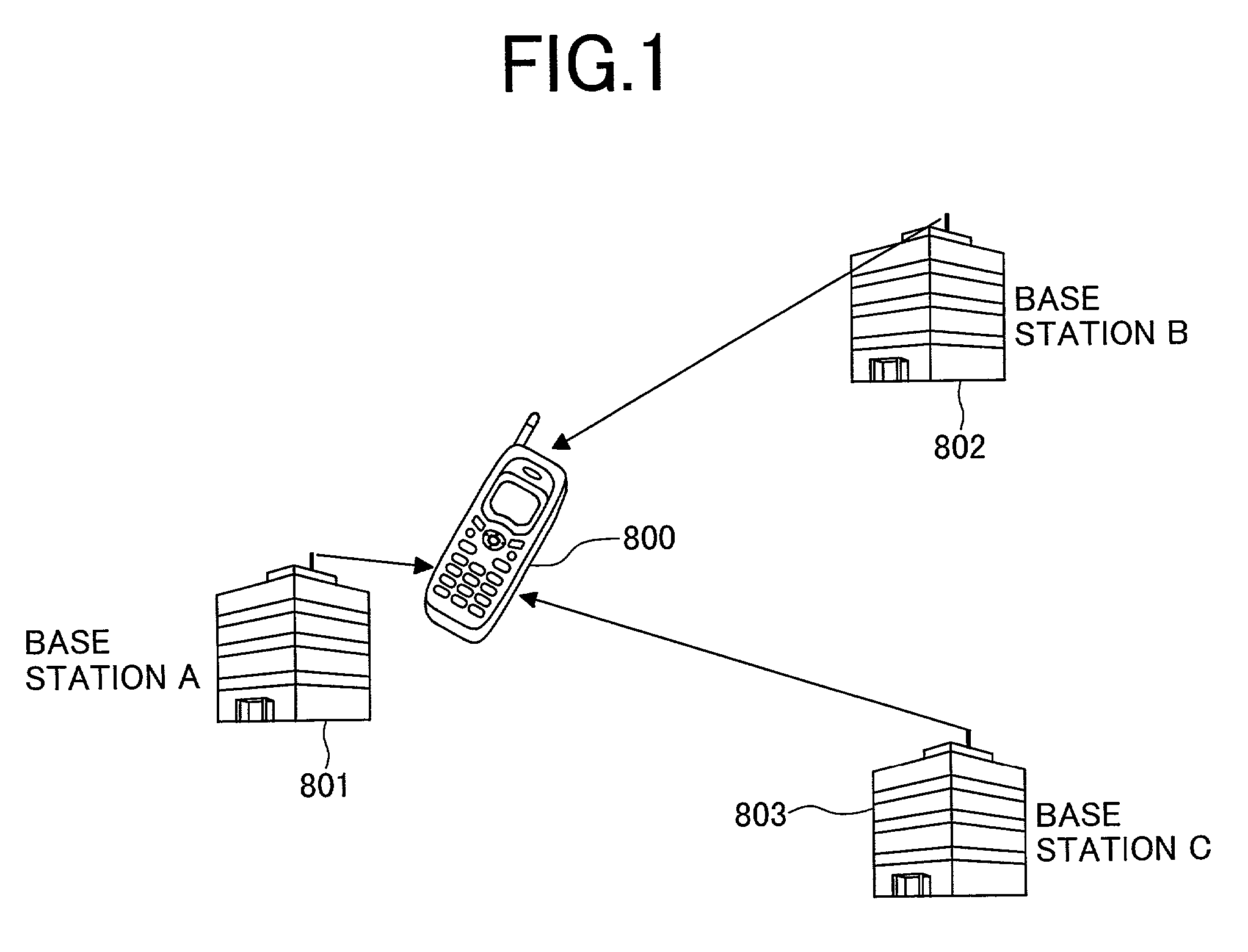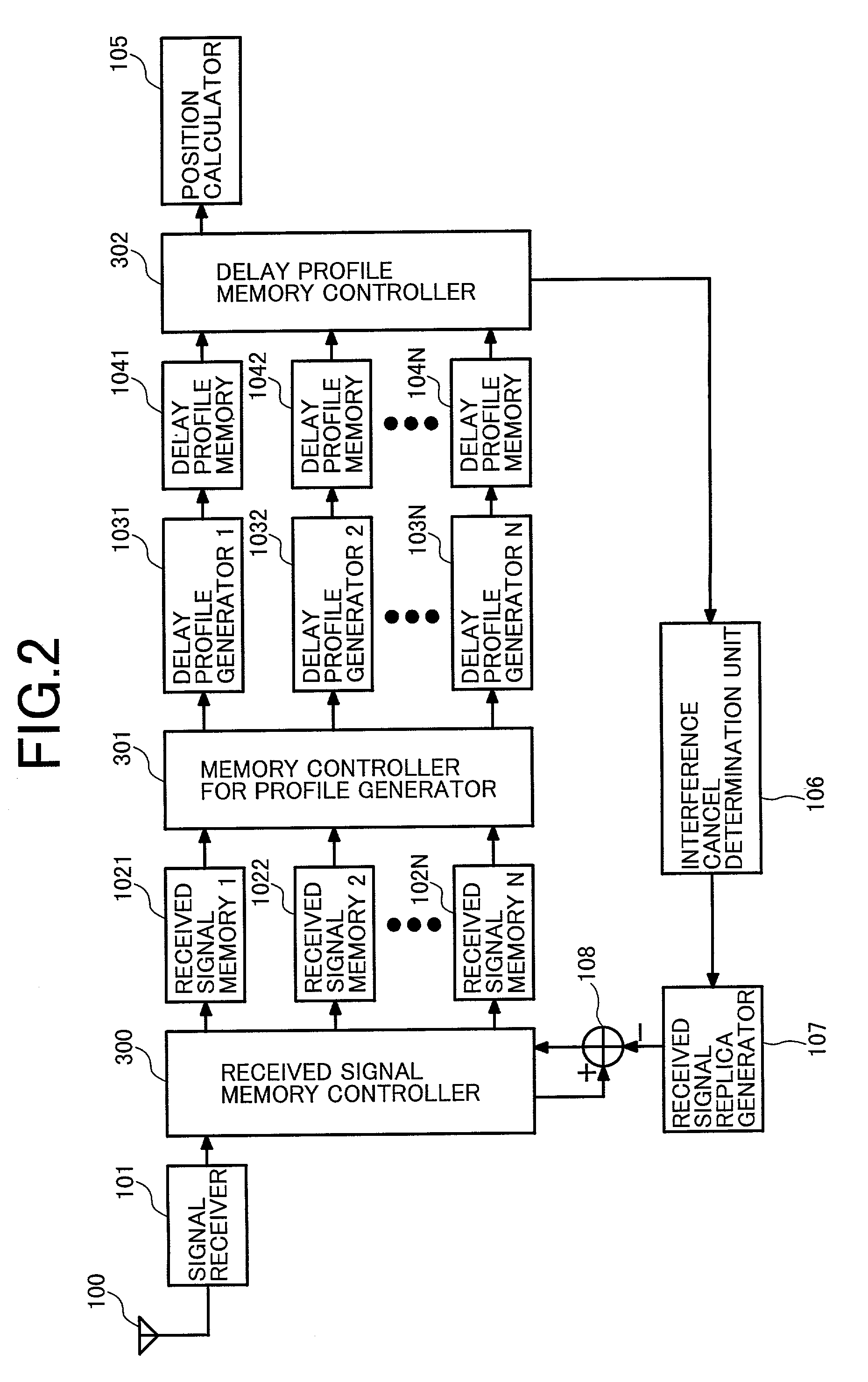Radio terminal
a radio terminal and terminal technology, applied in the field of radio terminals, can solve the problems of degrading the receiving quality of the mobile terminal, the inability of the mobile terminal to receive the necessary number of base stations, and the weak signal from the base station, so as to speed up the speed of position measurement and reduce the capacity of the memory
- Summary
- Abstract
- Description
- Claims
- Application Information
AI Technical Summary
Benefits of technology
Problems solved by technology
Method used
Image
Examples
first embodiment
[0036]FIG. 2 is a block diagram of a mobile terminal in the invention. In FIG. 2, the same reference numerals are used for the same functional items as those of the conventional mobile terminal shown in FIG. 12.
[0037]Signals received from base stations via the antenna 100 are sent to a signal receiver 101. The signal receiver 101 is composed of a radio part (receiver and transmitter), a base band processing part, etc. The radio part performs such receiving processings as amplification, frequency conversion, etc. of high and intermediate signals for cellular signals received from the base stations via the antenna 100 and the base band processing part performs such processings as demodulation, AD (Analog to Digital) conversion, etc. of base band signals to generate received signals. Received signals generated by the signal receiver 101 are written in the received signal memories 1021 to 102N sequentially via the received signal memory controller 300. The received signals written in th...
second embodiment
[0096]Such way, the mobile terminal in the second embodiment, provided with the correlation value memory 121 and the delay profile replica generator 120, can generate a replica of each delay profile with use of the correlation value stored in the correlation value memory 121 and subtract the replica from the delay profile of another base station to make interference cancellation. The mobile terminal can thus be configured without using any received signal memory, thereby the hardware scale, especially the memory capacity of the mobile terminal provided with positioning functions can be reduced and the mobile terminal can be reduced in both size and price.
[0097]FIG. 10 shows a block diagram of a mobile terminal in the third embodiment of the invention. In FIG. 10, the same reference numerals are used for the same functional items as those of the mobile terminals in the first embodiment (FIG. 2) and in the second embodiment (FIG. 7).
[0098]Signals received from base stations via the an...
third embodiment
[0106]Such way, the mobile terminal in this third embodiment, since it is provided with a plurality of delay profile generators 1031 to 103N, can generate a plurality of delay profiles in parallel, thereby the position calculating time can be reduced. In addition, the mobile terminal, since it is provided with the correlation value memory 121 and the delay profile replica generator 120, can generate a replica of each delay profile with use of a correlation value stored in the correlation value memory 121 and subtract the replica from the delay profile of another base station so as to make interference cancellation that eliminates signal interference from other base stations. It is thus possible to omit the conventional received signal memory to configure the mobile terminal. As a result, the hardware scale, especially the memory capacity of the mobile terminal provided with positioning functions can be reduced to improve the serviceability of position information. In addition, the m...
PUM
 Login to View More
Login to View More Abstract
Description
Claims
Application Information
 Login to View More
Login to View More - R&D
- Intellectual Property
- Life Sciences
- Materials
- Tech Scout
- Unparalleled Data Quality
- Higher Quality Content
- 60% Fewer Hallucinations
Browse by: Latest US Patents, China's latest patents, Technical Efficacy Thesaurus, Application Domain, Technology Topic, Popular Technical Reports.
© 2025 PatSnap. All rights reserved.Legal|Privacy policy|Modern Slavery Act Transparency Statement|Sitemap|About US| Contact US: help@patsnap.com



